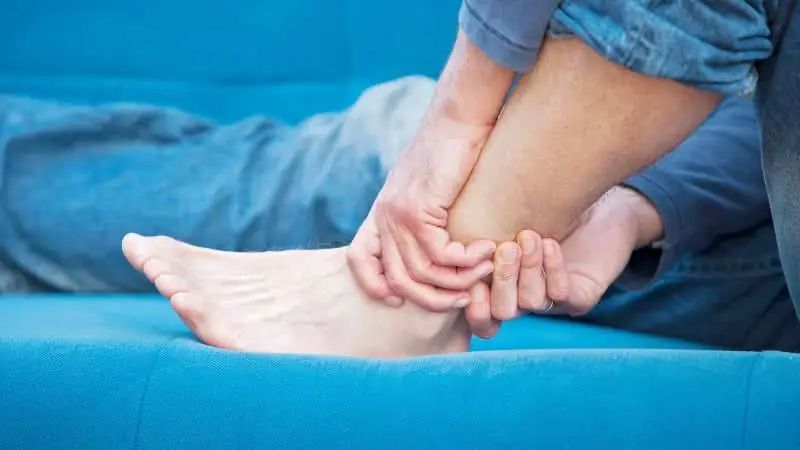Written By: Ken Bordfeld, PT, Clinical Director, SportsCare Eatontown
A ligament is a strong band of tissue that attaches to the bones on either side of a joint. A sprain occurs when an excessive force is applied to a ligament that results in damage to it.
The ligament plays a major role in providing stability to a joint. If a force exceeds the strength of the ligament, the ligament may tear partially or completely.
There are three ligaments on the lateral (outer portion) of the ankle. These ligaments are subjected to a great deal of stress with athletic activities, especially ones that involve jumping such as basketball and volleyball.
If the ankle ligaments are damaged, the ankle may become unstable resulting in an inability to perform sporting activities. In extreme cases even walking may be difficult.
If not properly treated, an ankle sprain may lead to repeated sprains which can ultimately damage the joint.
In this blog post, we discuss ankle sprains and pain symptoms, as well as how physical therapy can help, and what can be done after your rehabilitation has been completed.
Ankle Sprain & Pain Symptoms
The initial symptoms of an ankle sprain are pain and swelling of the ankle of varying intensity.
Many patients describe hearing and/or feeling a “pop” on the lateral portion of their ankle when the injury occurs.
There may also be visible bruising due to bleeding from the ligament. Often, the ankle feels loose or unstable while walking.
How Physical Therapy Can Help
Fortunately, most ankle sprains can be effectively managed with physical therapy.
Ligament healing follows a predictable course that your therapist understands and uses as a guideline to design a specific treatment program. In addition, your treatment is predicated on the severity of your injury.
During the initial stage of therapy, your therapist will focus on relieving pain and swelling of the ankle. Following that, you will be started on passive and active exercises to restore range of motion and strength to your ankle.
Strengthening exercises are designed to not only strengthen the muscles that support your ankle. They are also important for stimulating the ligament to repair with strong, well-aligned tissue.
In the final stages of rehabilitation, you will perform balance exercises. When working on balance, you stimulate the production of small nerves in the ligament.
These nerves play an extremely important role in the dynamic stability of the ankle. As the ankle moves in an extreme range of motion, the nerves are stretched. When the nerves are stretched, they send a message to your spinal cord.
In response, the spinal cord will send a message to the muscles surrounding your ankle causing them to contract and place the ankle in a stable position.
This is referred to as a “feedback loop” which occurs in the blink of an eye without conscious thought. This mechanism is extremely important when walking on uneven surfaces and while participating in sports.
Post-Rehabilitation
After completing a comprehensive rehabilitation program, you will be able to return to your normal activities with confidence in the stability of your ankle.
If you have any questions about your ankle pain and would like to be assessed by a SportsCare Physical Therapist, we encourage you to stop in for a complimentary wellness screening or request an appointment today at a facility near you.


